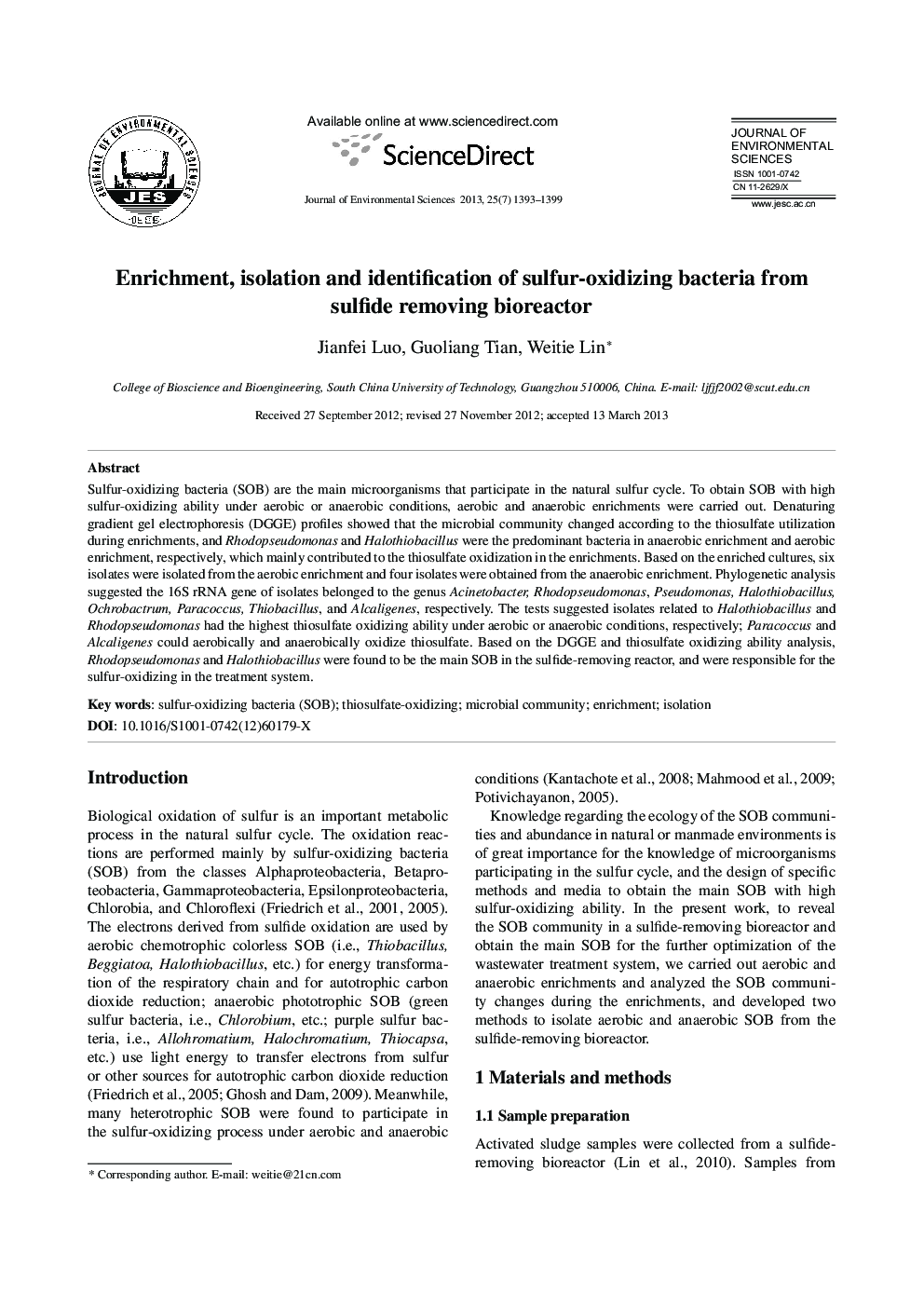| Article ID | Journal | Published Year | Pages | File Type |
|---|---|---|---|---|
| 4454851 | Journal of Environmental Sciences | 2013 | 7 Pages |
Sulfur-oxidizing bacteria (SOB) are the main microorganisms that participate in the natural sulfur cycle. To obtain SOB with high sulfur-oxidizing ability under aerobic or anaerobic conditions, aerobic and anaerobic enrichments were carried out. Denaturing gradient gel electrophoresis (DGGE) profiles showed that the microbial community changed according to the thiosulfate utilization during enrichments, and Rhodopseudomonas and Halothiobacillus were the predominant bacteria in anaerobic enrichment and aerobic enrichment, respectively, which mainly contributed to the thiosulfate oxidization in the enrichments. Based on the enriched cultures, six isolates were isolated from the aerobic enrichment and four isolates were obtained from the anaerobic enrichment. Phylogenetic analysis suggested the 16S rRNA gene of isolates belonged to the genus Acinetobacter, Rhodopseudomonas, Pseudomonas, Halothiobacillus, Ochrobactrum, Paracoccus, Thiobacillus, and Alcaligenes, respectively. The tests suggested isolates related to Halothiobacillus and Rhodopseudomonas had the highest thiosulfate oxidizing ability under aerobic or anaerobic conditions, respectively; Paracoccus and Alcaligenes could aerobically and anaerobically oxidize thiosulfate. Based on the DGGE and thiosulfate oxidizing ability analysis, Rhodopseudomonas and Halothiobacillus were found to be the main SOB in the sulfide-removing reactor, and were responsible for the sulfur-oxidizing in the treatment system.
